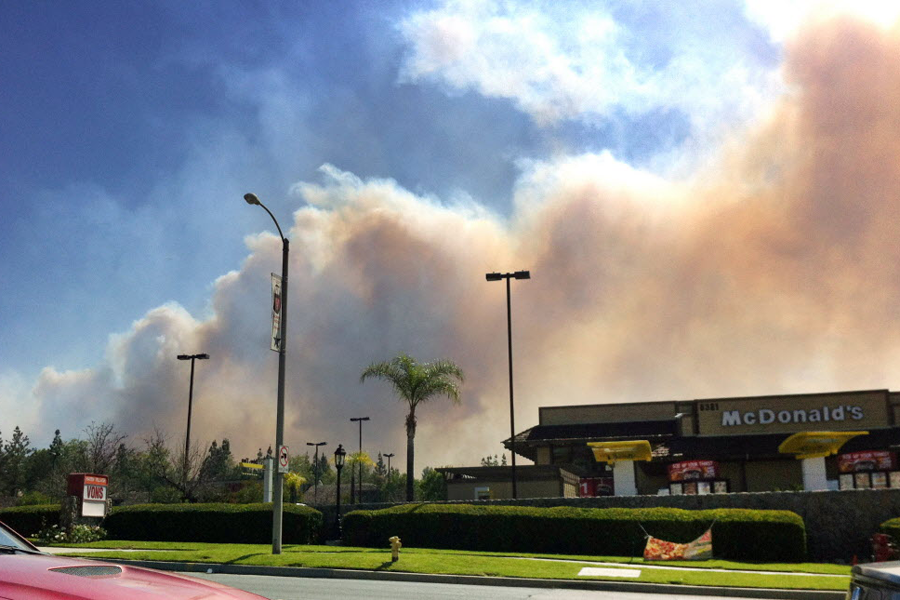Entering new wildfire era, California broadcasts an old message: prevention
Loading...
| Los Angeles
As federal, state, and local officials tour California touting Wildfire Awareness Week, the message is a sobering one: this is already shaping up to be the worst fire season on record.
The statistics are grim. In January of 2013, the state reported fighting only a handful of fires. In January of this year, there were 437. Perhaps most telling is that the fire season, which traditionally shuts down for the winter, has simply never ended since a year ago.
“We’ve just continued right into the next season with no break,” says Daniel Berlant, spokesman for the California Department of Forestry and Fire Protection, also known as Cal Fire.
So far this year, “Cal Fire has already fought 1,244 wildfires, and that’s triple the average for that period of time,” US Secretary of the Interior Sally Jewell said at a press conference in San Diego Tuesday, “and it’s not going to get better over the course of this year.”
The state’s historic drought and overall climate shift are two significant factors underlying these trends. The annual snowpack measurement, determined in the spring when officials head up to the Sierra Nevada to gauge just how much snow runoff to expect for the rest of the year, is only at some 18 percent of normal years. Add to that an unusually warm April, with some temperatures in the three digits, and the snowpack has begun to melt faster and earlier than usual.
But this year, officials are going to great lengths to emphasize that some 95 percent of fires in the state are caused by human activity – either intentional or accidental – from untended campfires to overgrown vegetation around homes.
“That means 95 percent of all fires can be prevented,” said Cal Fire’s director, Ken Pimlott, at the press conference.
Firefighting costs have also hit new highs, forcing the state to draw on emergency funds to supplement its firefighting budget of more than $1 billion. Since July of 2013, some $130 million has been tapped from the state emergency fund. Cal Fire’s Mr. Berlant says the agency estimates it will have spent some $212 million in additional emergency funds fighting fires by the end of June of this year, when the fiscal year wraps.
"We're in a season that is not necessarily the norm from the past but may be becoming the norm of the future," he said, adding that “it is absolutely critical that residents be prepared for wildfires.”
Recognition that extremes may be fast becoming the new normal is producing far more coordination between local, state, and federal officials – and helping to accelerate innovations that mitigate losses during extreme events such as wildfires and hurricanes.
“Just the understanding over the past couple of years has changed,” says Darren Hammell, co-founder and chief strategic officer with Princeton Power Systems, a New Jersey-based advanced technology company. “We’re seeing more government planning and just popular understanding that these changes are real,” he adds. “People need to prepare for them because they are not one-time events but part of a trend.”
His company has produced a portable power grid that it brought to San Diego during the fire season two years ago. Dubbed a “micro-grid,” this enables crews to have power in remote areas during the worst of the fire fighting and can also be used as a community gathering point when power is out.
Communication has always been key to better disaster control, Mr. Hammell says, though he is quick to add that while mitigation is important, the most important shift may be in changing people’s willingness to prepare.
“The costs of disasters are mounting,” he says, “but it is much better to pay the costs up front in preparedness than after the fact in losses.”
Taking responsibility for behavior during fire season was a theme that California Gov. Jerry Brown hit hard in a Monday press conference, urging people, for instance, not to throw cigarettes out their car window. A good general rule might be, he said, “don’t do stupid things.”







